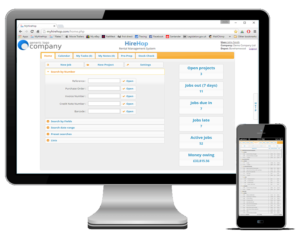 HireHop now allows you to have items that are being supplied in a job to be dispatched and returned on different dates to the job dates. You can also make items chargeable for different periods to those setup in the job. This allows you to add additional rentals to the job and charge accordingly.
HireHop now allows you to have items that are being supplied in a job to be dispatched and returned on different dates to the job dates. You can also make items chargeable for different periods to those setup in the job. This allows you to add additional rentals to the job and charge accordingly.
Lets say for example you have a job job from Monday to Friday. With the new feature in HireHop you can now send some items out and make them unavailable from Wednesday to Friday. If you want, you can also only make them chargeable from Wednesday to Thursday, or even charge them for the job hire duration, the choice is yours.
Labor items have also been enhanced. You can set the start and finish times and dates the service is required for. You can also have an overriding charging period for any labor services supplied within a job. As an example, a Job is again from Monday to Friday, however you only need the labor on Monday from 8am to 8pm, to deliver and setup the rental. The problem that HireHop can now overcome, is that the 12 hour shift is more than a standard day rate, so HireHop enables you to set the chargeable duration for that particular entry to a 1½ day rate for example, instead of a single day.


 Due to Brexit, and lots of customers having to ship goods in and out of their country, we have added a Job Carnet document that lists and numbers all the items in a job correctly. Numbering is correctly calculated according to sequence and quantity.
Due to Brexit, and lots of customers having to ship goods in and out of their country, we have added a Job Carnet document that lists and numbers all the items in a job correctly. Numbering is correctly calculated according to sequence and quantity.
